Virupaksha Temple, Hampi
Label : Top Attraction
Tags : Temple
Timings : 9:00 AM - 1:00 PM, 5:00 PM - 9:00 PM
Time Required : 1-2 hrs
Dress Code : None. But it is recommended to dress modestly as it is an active temple.
Active Temple : Yes
Completed in : 14th Century
Virupaksha Temple, Hampi Overview
The Virupaksha temple (or Prasanna Virupaksha temple) is located on the banks of the Tungabhadra river at Hampi. Built during the 7th century, the beautiful architecture and history of the temple have made it a UNESCO World Heritage site. The temple is abode to one of the forms of Lord Shiva called Lord Virupaksha. While it is located at present-day Hampi, it was once a smaller shrine in the middle of the ancient and majestic Vijayanagara empire. You will find beautiful stone inscriptions dating back to the 7th century on the walls of the temple as proof of its rich heritage. Architecture-lovers and history-buffs, do visit the temple when you are in Hampi!
The temple has tall towers or gopurams acting as gateways to the inner sanctums, as is usually seen in temples of south Indian style architecture. The gopurams lead to many inner corridors and halls, all decorated with ornate stone-work. The sculptures depict mythological stories of numerous Gods and Goddesses. The main deity of the temple is Lord Virupaksha, but it is also abode to few other Hindu deities too. While many devotees visit the temple during festival seasons like the Car Festival, it is otherwise less crowded.
Read More on Virupaksha Temple
Architecture of Virupaksha Temple
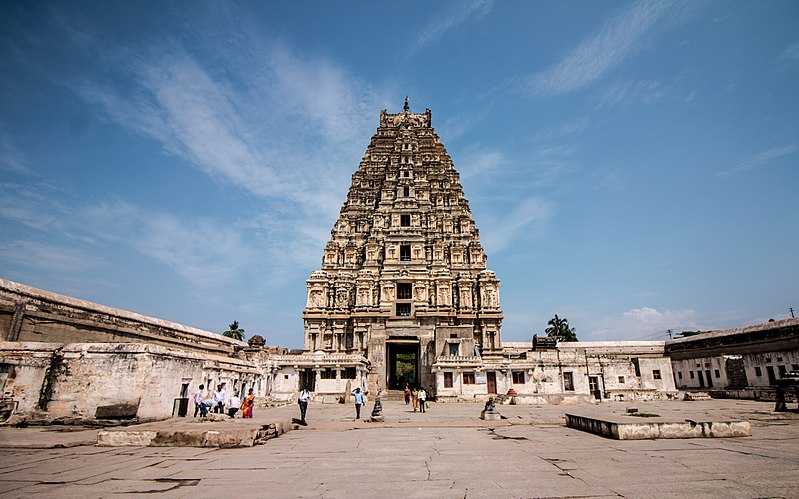
Smaller gopurams can also be seen from the outer courtyard through which you will reach the inner courtyards and other sanctums and idols. The 100-pillared hall leads to the sanctum of the triple-headed Nandi, Lord Shiva's vehicle or Vimanam. The inner sanctum of this hall leads to Lord Virupaksha's shrine. He is represented as a Shiva linga, and ornate decorations adorn the walls of this corridor. The shrines of Goddes Pampa, Bhuvaneshwari, Nava Grahas, and another form of Shiva, Pataleshwara are also seen in the temple.
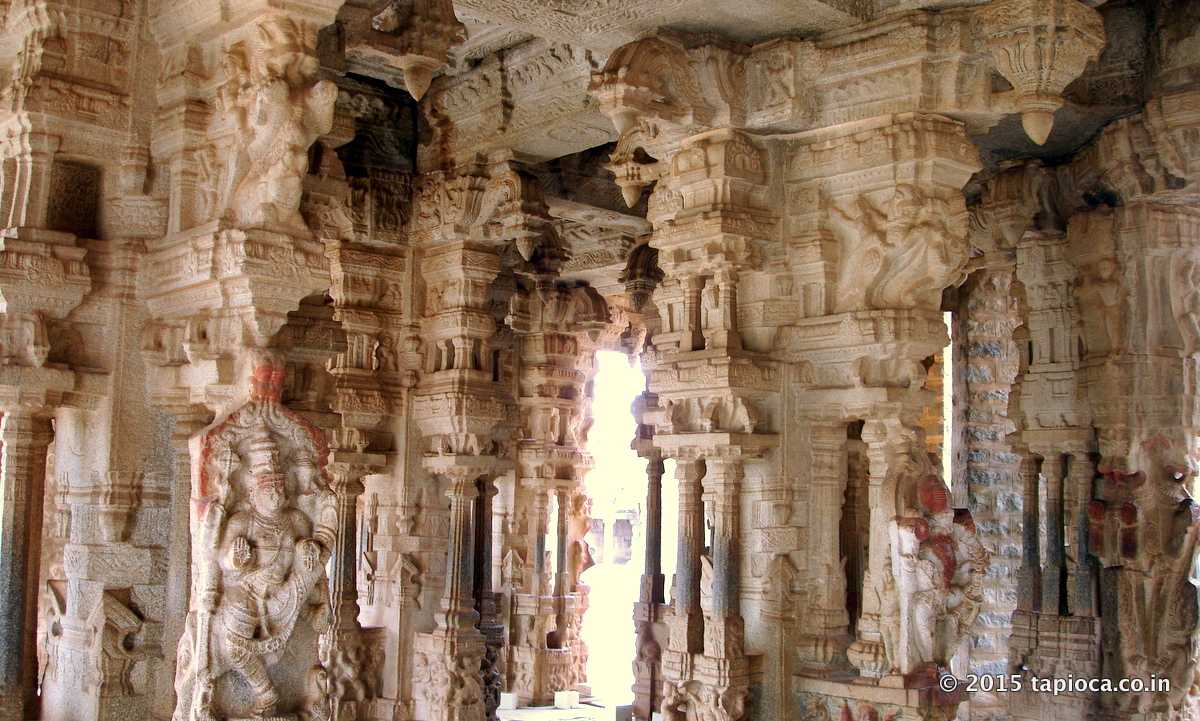
Many pillared halls are also part of the Virupaksha temple complex. King Krishnadevaraya, of the Vijayanagar empire, is said to have been a major contributor to the development of the temple during his time. He built the central pillared hall 'Maharanga Mandapam' in celebration of his coronation in 1509-10 A.D. It is one of the most ornate structures in the temple. Inscriptions o the stone near this hall illustrate Krishnadevaraya's contributions to the temple. Also, outside the temple, many ruins can be seen. These are said to be the ruins of an ancient market site near the temple.
History and Origin of Virupaksha Temple
Where Hampi now stands, the capital of the Vijayanagar empire once thrived. However, the Virupaksha temple is said to have originated even before the Vijayanagara empire rose its capital city in the region. A simple structure was built during the Chalukyan and Hoysala periods (9th century A.D.) for Virupaksha, but the temple complex was expanded, and artistic stone works were further added during the rule of the Vijayanagar empire.
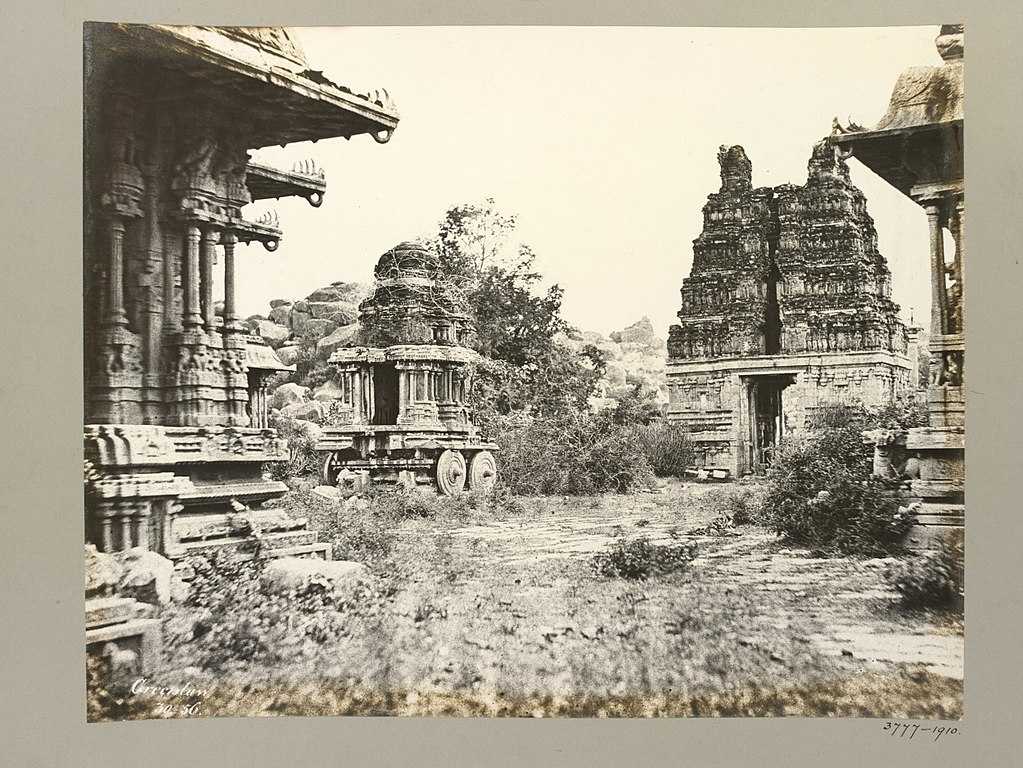
The Archaeological Survey of India recognises that the temple was built by the queen of Vikramaditya II, named Lokamahadevi, to commemorate the King's success in a battle over the Pallavas of Kanchi. Hence, many inscriptions also refer to the temple as 'Lokeshwara Mahasila Prasada' in praise of the queen's generosity. What began as a small 'pre-Virupaksha temple', grew bigger with multiple gopurams and pillared halls under the rule of King Deva Raya II. While subsequent invasions of Vijayanagar by empires from the north destroyed most of Vijayanagar empire and Hampi, many parts of the majestic Virupaksha temple were luckily unharmed.
Virupaksha - One of the Pattadakal Temples
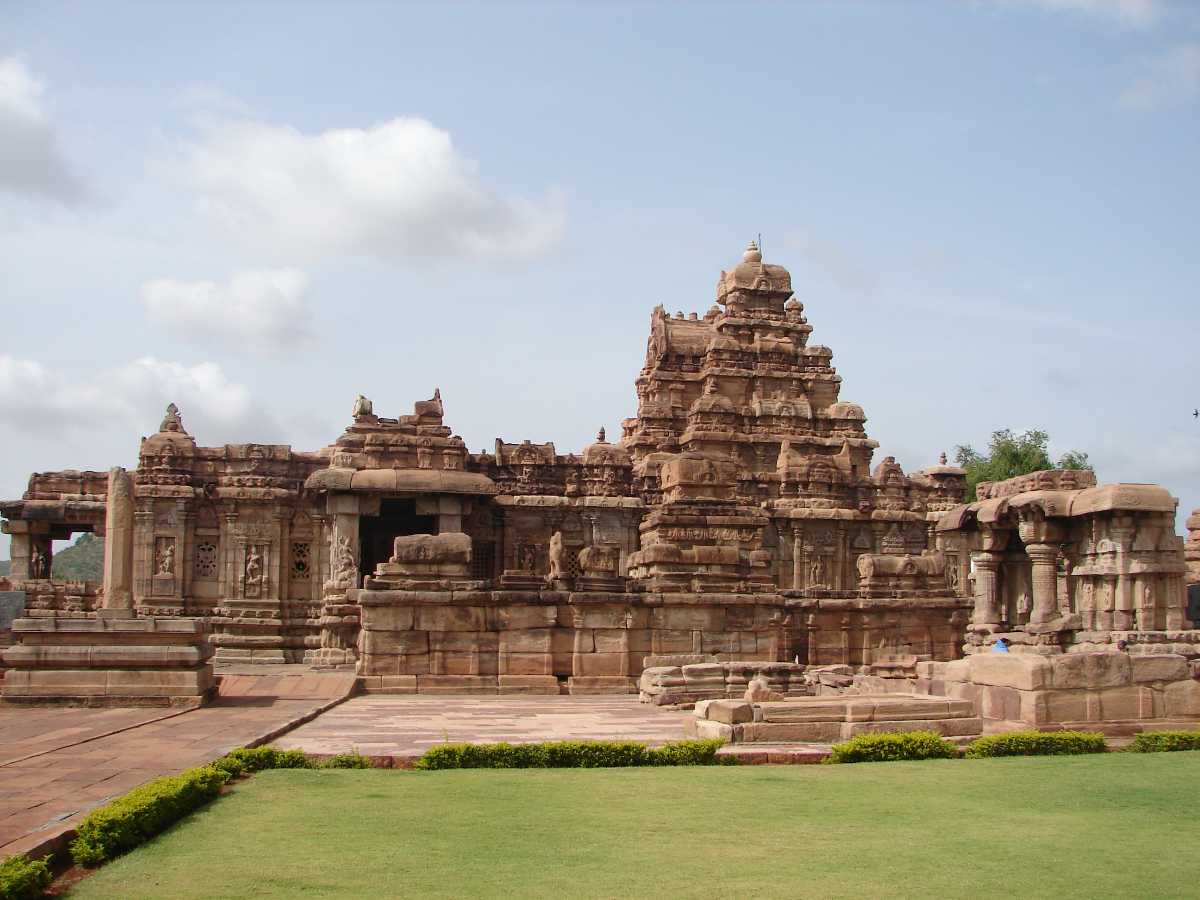
Festivals and Celebrations at Virupaksha Temple
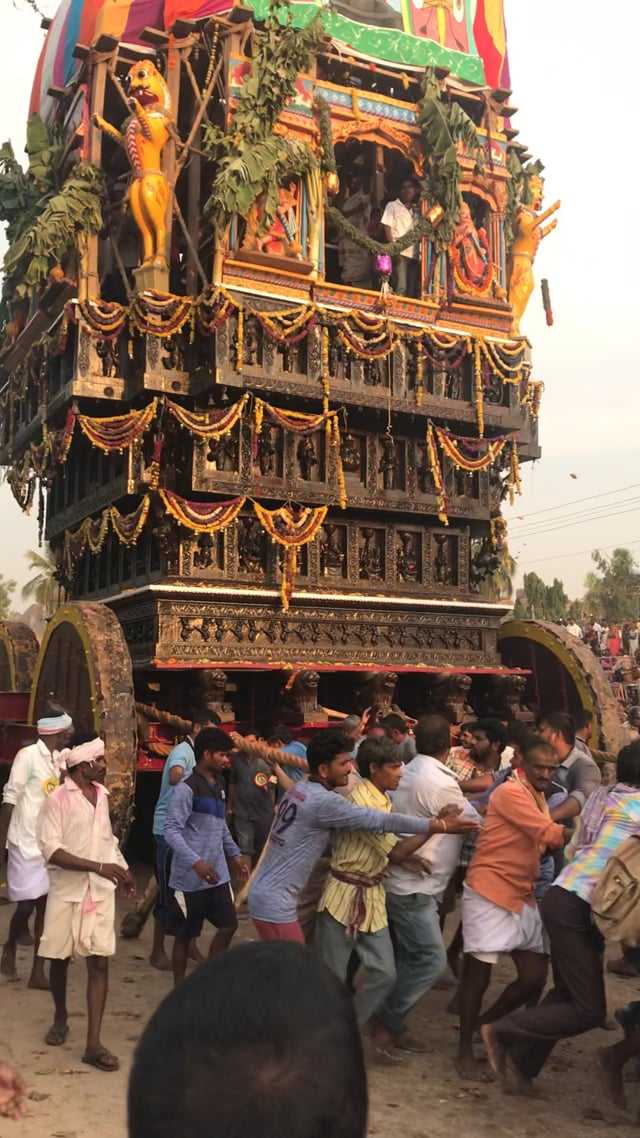
In the month of December, the temple again celebrates the marriage of Virupaksha and Pampa with a colourful ceremony called 'Phalapuja festival', which attracts a huge crowd of devotees. This happens from 3rd to 5th November.
And the annual celebration of Shivaratri, a night-long prayer in praise of Lord Shiva is also celebrated at the Virupaksha temple. It usually falls in the months of February or March.
Tips For Visiting Virupaksha Temple
2. Photography of the idols inside the sanctums is not allowed.
How To Reach Virupaksha Temple, Hampi
The nearest railway station to Virupaksha temple is Hospet Junction. Express and passenger trains are available from Bangalore to Hospet, and it is approximately a 9-hour journey. From Hospet, it is a 30-minute car ride to Virupaksha temple.
